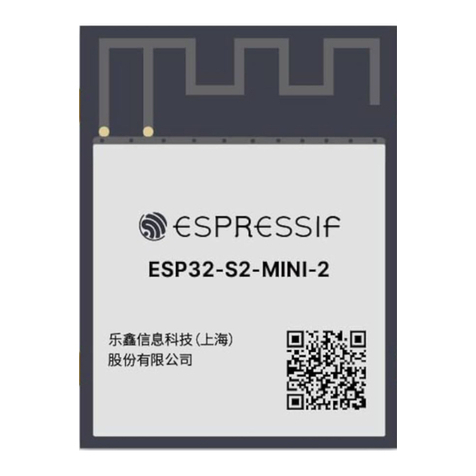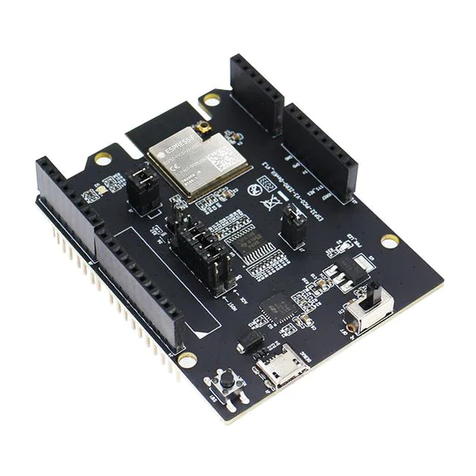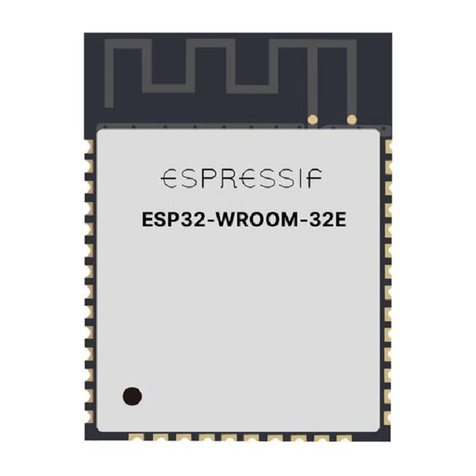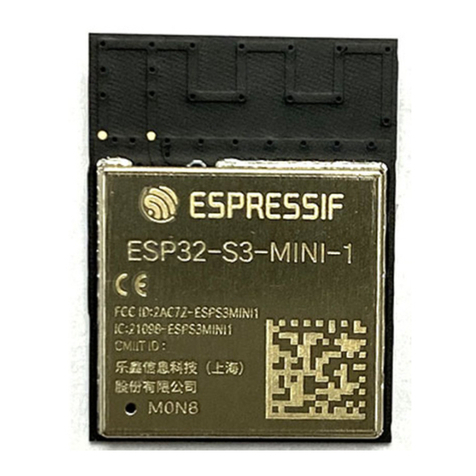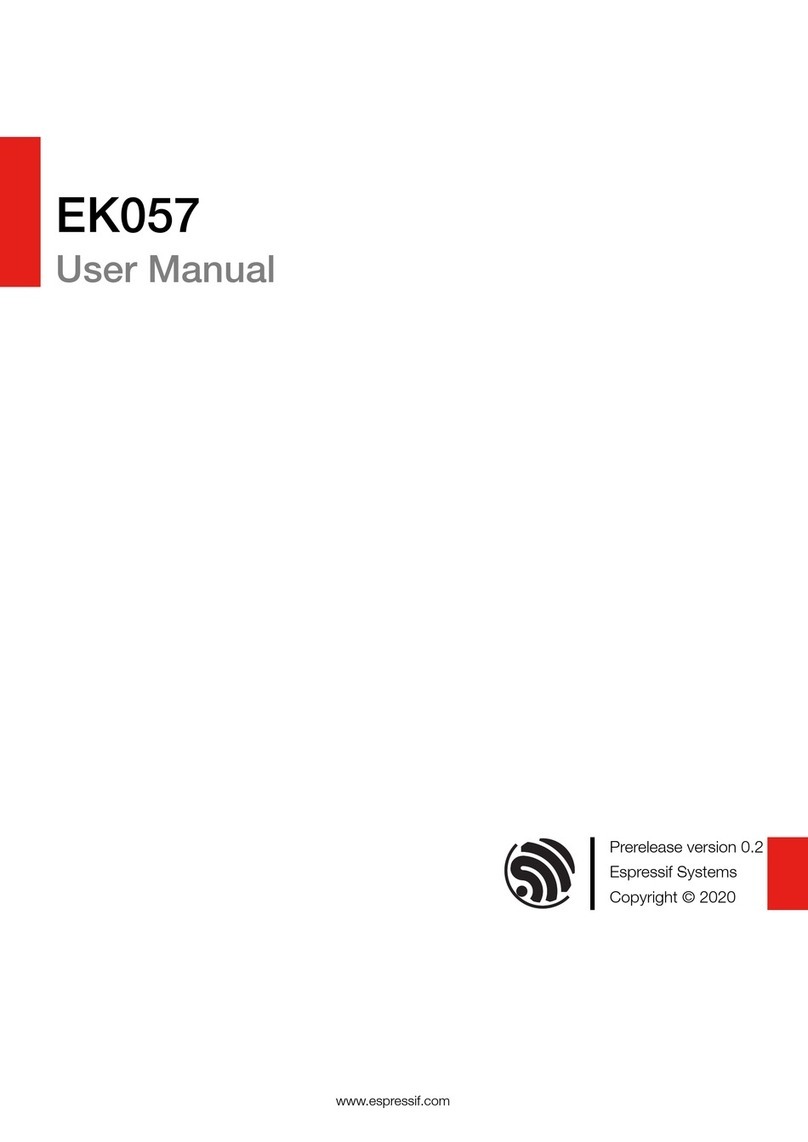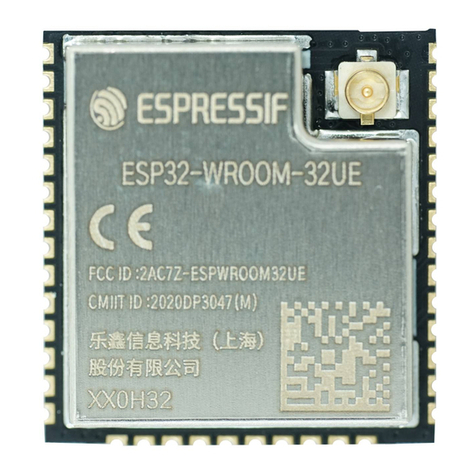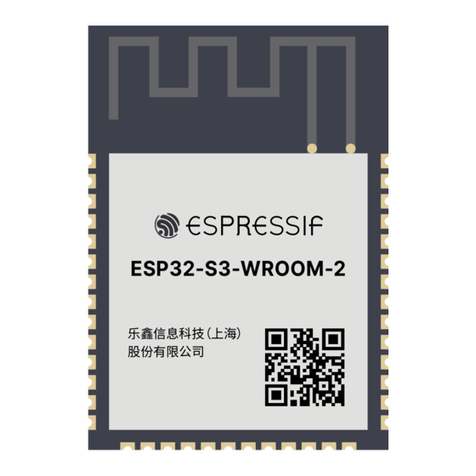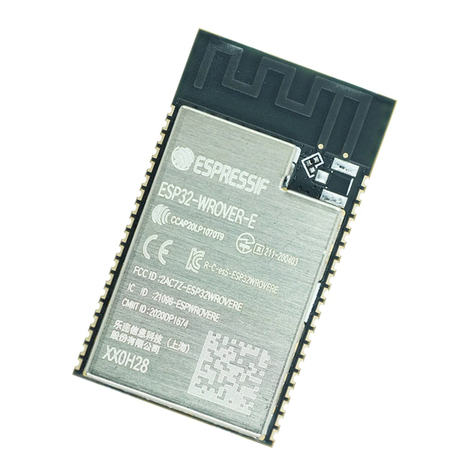
2 Pin Definitions
Table 2 – cont’d from previous page
Name No. Type1Function
EN 3 I High: on, enables the chip.
Low: off, the chip powers off.
Note: Do not leave the EN pin floating.
IO4 4 I/O/T RTC_GPIO4, GPIO4, TOUCH4, ADC1_CH3
IO5 5 I/O/T RTC_GPIO5, GPIO5, TOUCH5, ADC1_CH4
IO6 6 I/O/T RTC_GPIO6, GPIO6, TOUCH6, ADC1_CH5
IO7 7 I/O/T RTC_GPIO7, GPIO7, TOUCH7, ADC1_CH6
IO15 8 I/O/T RTC_GPIO15, GPIO15, U0RTS, ADC2_CH4, XTAL_32K_P
IO16 9 I/O/T RTC_GPIO16, GPIO16, U0CTS, ADC2_CH5, XTAL_32K_N
IO17 10 I/O/T RTC_GPIO17, GPIO17, U1TXD, ADC2_CH6, DAC_1
IO18 11 I/O/T RTC_GPIO18, GPIO18, U1RXD, ADC2_CH7, DAC_2, CLK_OUT3
IO8 12 I/O/T RTC_GPIO8, GPIO8, TOUCH8, ADC1_CH7
IO19 13 I/O/T RTC_GPIO19, GPIO19, U1RTS, ADC2_CH8, CLK_OUT2, USB_D-
IO20 14 I/O/T RTC_GPIO20, GPIO20, U1CTS, ADC2_CH9, CLK_OUT1, USB_D+
IO3 15 I/O/T RTC_GPIO3, GPIO3, TOUCH3, ADC1_CH2
IO46 16 I GPIO46
IO9 17 I/O/T RTC_GPIO9, GPIO9, TOUCH9, ADC1_CH8, FSPIHD
IO10 18 I/O/T RTC_GPIO10, GPIO10, TOUCH10, ADC1_CH9, FSPICS0, FSPIIO4
IO11 19 I/O/T RTC_GPIO11, GPIO11, TOUCH11, ADC2_CH0, FSPID, FSPIIO5
IO12 20 I/O/T RTC_GPIO12, GPIO12, TOUCH12, ADC2_CH1, FSPICLK, FSPIIO6
IO13 21 I/O/T RTC_GPIO13, GPIO13, TOUCH13, ADC2_CH2, FSPIQ, FSPIIO7
IO14 22 I/O/T RTC_GPIO14, GPIO14, TOUCH14, ADC2_CH3, FSPIWP, FSPIDQS
IO21 23 I/O/T RTC_GPIO21, GPIO21
IO33 24 I/O/T SPIIO4, GPIO33, FSPIHD
IO34 25 I/O/T SPIIO5, GPIO34, FSPICS0
IO45 26 I/O/T GPIO45
IO0 27 I/O/T RTC_GPIO0, GPIO0
IO35 28 I/O/T SPIIO6, GPIO35, FSPID
IO36 29 I/O/T SPIIO7, GPIO36, FSPICLK
IO37 30 I/O/T SPIDQS, GPIO37, FSPIQ
IO38 31 I/O/T GPIO38, FSPIWP
IO39 32 I/O/T MTCK, GPIO39, CLK_OUT3
IO40 33 I/O/T MTDO, GPIO40, CLK_OUT2
IO41 34 I/O/T MTDI, GPIO41, CLK_OUT1
IO42 35 I/O/T MTMS, GPIO42
RXD0 36 I/O/T U0RXD, GPIO44, CLK_OUT2
TXD0 37 I/O/T U0TXD, GPIO43, CLK_OUT1
IO2 38 I/O/T RTC_GPIO2, GPIO2, TOUCH2, ADC1_CH1
IO1 39 I/O/T RTC_GPIO1, GPIO1, TOUCH1, ADC1_CH0
GND 40 P Ground
EPAD 41 P Ground
1P: power supply; I: input; O: output; T: high impedance.
Espressif Systems 5 ESP32-S2-SOLO-2 User Manual v0.5
